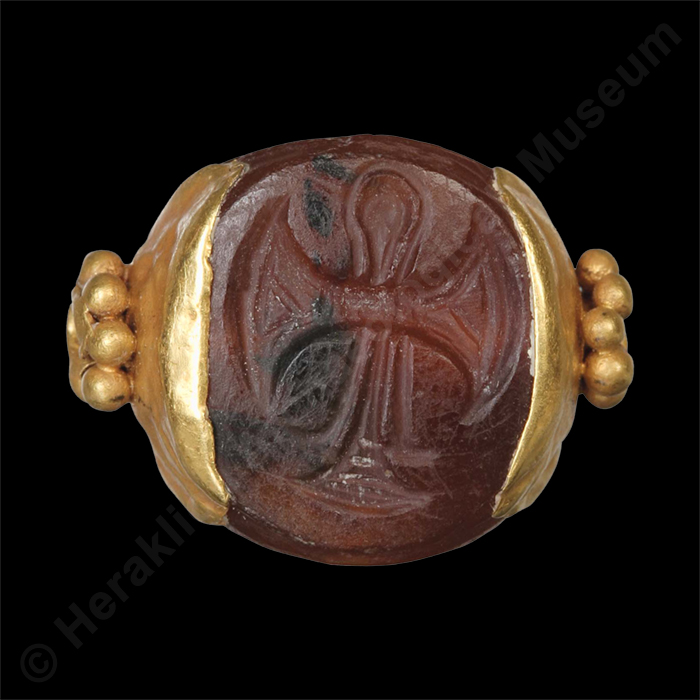The exhibit
Poros, Cave Tomb I. 1500-1450 BC

Sealstones, usually made of precious materials with elaborate miniature decoration, often appear to have been worn on the wrist of important figures wielding administrative or religious authority in Minoan Crete. One such example is this carnelian sealstone, gold-mounted and decorated with granulation, in order to be threaded and used as an ornament like that worn by the Cup-Bearer in the fresco of the same name. The sealstone is pierced by a hole along the horizontal axis, decorated with a granulated rosette at either end. The Minoan artisan carved significant ritual and sacred symbols into the three-sided prism seal. One of the sealing surfaces depicts a combined double axe and sacral knot, a theme which is often found in various forms of Minoan art and may have carried a particular ideological symbolism. The other two surfaces are decorated with an amphora with S-shaped handles, probably a vase used in rituals, and an indeterminate crescent-shaped object.













